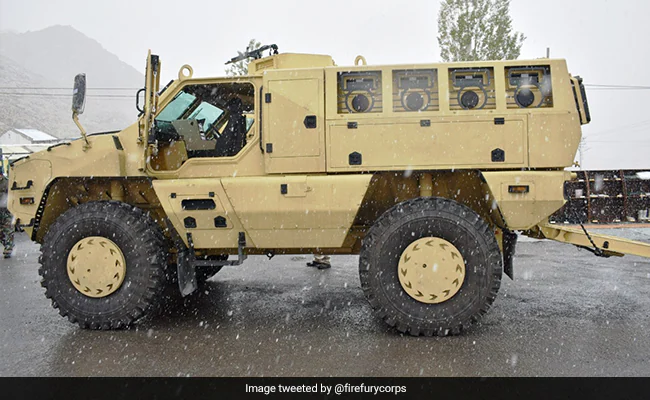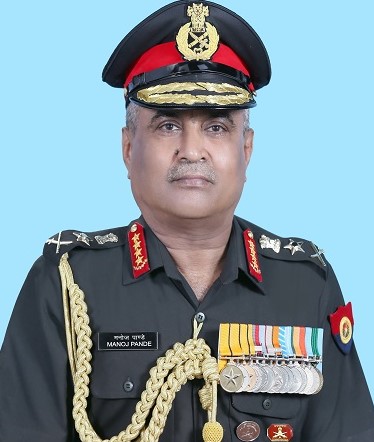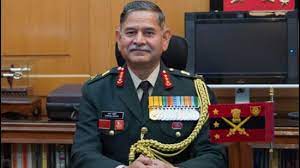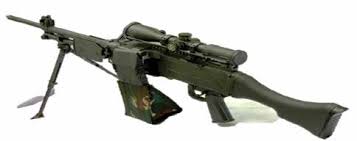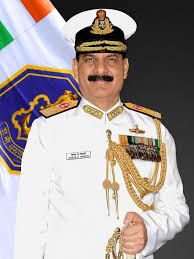Indian Army intends to procure approximately 823 Nos High Mobility Vehicles 8×8 General Service and has issued a Request for Information (RFI) for the same.
The vehicle will be used for transportation of heavy equipment on metaled roads and tracks including towing of Trailers loaded with Tanks/ other equipment weighing up to 50 Ton weight.
Further, it will be provided with 8×8 drive and be capable of operating as a General Service High Mobility load carrier with payload capacity of not less than 12,000 Kg on highway and 10,000 Kg in earthen roads.
The platform should facilitate modification for other uses including troop carriage, containerization and other specialist roles.
The tentative delivery schedule for supply of the equipment after conclusion of contract will be based on delivery at different locations within the country with numbers specified.
Operational Parameters Required
The operational parameters enlisted in the RFI are as under: –
(a) The vehicle should employ contemporary technology in all its systems to deliver optimum performance and reliability.
(b) Vehicle Dimensions and Weight. Unladen Vehicle Weight 13700 kg + 5% and Gross Vehicle Weight 28000 Kgs. The overall dimensions and weight of the vehicle should allow it to go across a bridge classification of Class-70.
The max height of the vehicle should not exceed 3300mm.
(c) The vehicle should have a facility for easy and quick conversion to flatbed configuration by removal of side walls, super structure and tail board.
The vehicle should have locking arrangements for container transportation. The vehicle should have a facility for loading, unloading and lashing of vehicles/ Earthmovers on the Flatbed.
(d) Operating Temperature Range. The vehicle will be designed to operate in the temperature range of minimum – 5 0C to -150C and maximum 400C to 450C.
Broad Technical Requirements.
(a) Engine. The vehicle engine will have the following characteristics: –
(i) Type of Engine. Contemporary Diesel Engine meeting BS-IV
Emission Norms.
(ii) Maximum Engine Output. The minimum power to weight ratio required to carry a load of 12 Tons on flat bed on highways or to tow a trailer with loaded tank/ other eqpt with total towing weight upto 100 Tons on highway.
(iii) Fuel Efficiency. Not less than two Km per litre (+ 0.5 Km) of fuel with full payload under standard conditions.
(iv) Service Life of the Vehicle. Service life of the vehicle including engine should not be less than 2,00,000 km/11 Years whichever is earlier .
(b) Power Train.
(i) The transmission system can be fully automatic/ manual with selectable 8×8 drive. Differential lock facility will be provided on all axles.
Engagement of high/ low gear and differential lock to be controlled from the driver’s cabin.
(ii) A winch mechanism will be provided in front & rear for self-recovery.
(iii) Hub reduction feature on all axles to enhance tractive effort in cross country driving to be provided. Power driven winch mechanism with minimum 80-meter-long winch rope of minimum pulling capacity for loading of unserviceable tank weighing upto 50 Ton on the trailer to be provided.
(c) Brake System. Vehicle will have a twin circuit pneumatic/ hydraulic service brake system with ABS. It should be able to hold the vehicle with payload of 12 Ton on a gradient of not less than 250 and on a gradient not less than 70 with loaded trailer of 50 Ton. In addition to the Service brakes, Emergency, Parking and Exhaust brakes should be provided. Parking brake must be able to hold the vehicle on all gradients which it is capable of negotiating. Brakes to comply with latest IS applicable at the time of trials. The brake system should also provide connection to towed trailer, through twin line direct actuating system or single line indirect actuating system.
(d) Suspension. Suspension system should comply with latest AIS and IS standards
(e) Steering System. Vehicle should have Right Hand Drive with adjustable tilt/ telescopic Power steering. Emergency power steering will be provided to enable steering of vehicle when engine power is switched off.
(f) Cabin. The vehicle cabin shall be based on fully forward control design. The cabin will be hydraulically tiltable. A self-adjusting hydraulic/ pneumatic seat will be provided for the driver. Co-driver seat will be manually adjustable. Three-point seat belts will be provided for both the seats. A berth type seat to be provided behind the driver and co-driver seats. The cabin will be fitted with Heating, Ventilation and Air
Conditioning system. The cabin will have provision for central locking. HAVC system will be provided in the vehicle cabin with arrangements for both heating and cooling.
The system will be capable of maintaining cabin temperature of 250 C+ 5 0 up to ambient temperature above 450C and 150 drop in temperature for ambient temperature above 450C will be achievable. Similarly, a temperature of 250 + 5 0 up to an ambient temperature of 00C and 150 C rise in temperature for ambient temperature below 00 C will be achievable. The co-driver seat should have an observation hatch atop it.
(g) Body. The load body should be having a light super structure which is easily removable with a canvas top. It should have adequate storage space for counter weights (ballast weights) and carriage of general service loads. Box cum seats over the entire length of body, on either side, will be provided storage boxes for ballast weight for its easy handling and storage in the body of the vehicle.
(i) The vehicle should have as low a silhouette as the physical characteristics permit.
(ii) The vehicle should have latest technology/ feature for cam & concealment, like special paints which reduce the signature of vehicle.
(iii) Provision will be made for carriage of camouflage nets and poles.
Brackets shall be provided at suitable places with which posts/ poles of camouflage net can be fitted.
(k) Navigation System. A GPS based navigation system compatible/ interoperable with IRNSS should be provided along with a display in driver cabin.
Further,the RFi also states that post technical evaluation, the equipment will be put through a Field Evaluation Trial (FET) in India on a ‘No Cost No Commitment’ basis. Trial timelines will be issued in the RFP. One vehicle will be provided for the FET process which would comprise of:-
(i) Desert trials in summer.
(ii) Winter trials in winter in High Altitude area.
(iii) MET (Maintainability Evaluation Trials).
(iv) DGQA evaluation.

